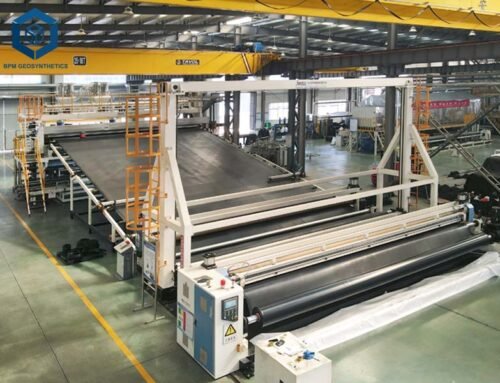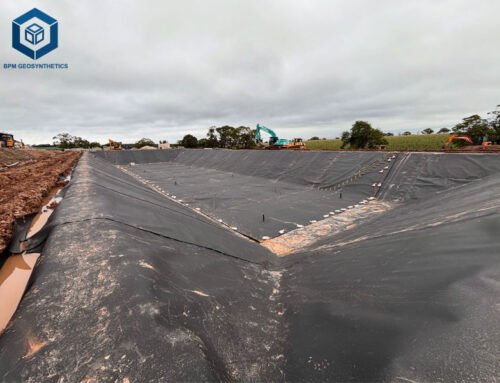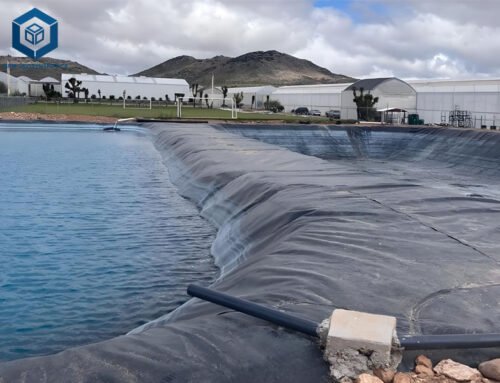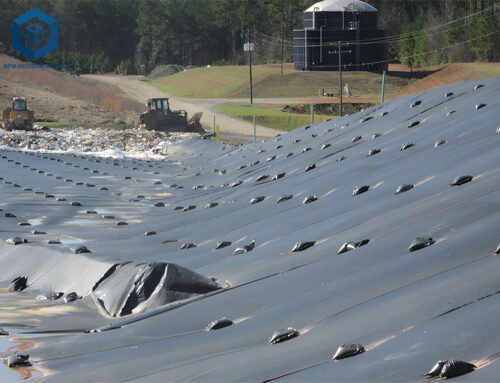When it comes to durable and cost-effective containment solutions for industrial projects, HDPE pool liners stand out as a top choice. As a leading manufacturer of high-performance geosynthetic materials, BPM Geosynthetics specializes in HDPE geomembrane liners designed for demanding applications, including industrial ponds, reservoirs, and wastewater treatment facilities. With superior chemical resistance, UV stability, and long-term durability, our HDPE pool liners provide reliable protection against leaks and environmental degradation.
In this article, we explore the key benefits of HDPE pool liners and how BPM Geosynthetics delivers industry-leading solutions for large-scale industrial projects. Whether you’re managing mining operations, aquaculture, or water storage systems, our geomembranes ensure optimal performance and sustainability. Read on to discover why HDPE liners are the preferred choice for engineers and project managers worldwide.
1. What Is HDPE Pool Liner
1.1 HDPE Pool Liner Definition
An HDPE Pool Liner, also known as a High-Density Polyethylene Geomembrane, is a robust geomembrane made from premium-grade high-density polyethylene (HDPE). It is manufactured using a specialized blend of virgin polyethylene resin, carbon black, antioxidants, anti-aging agents, and UV stabilizers. These additives significantly enhance the liner’s resistance to ultraviolet (UV) radiation, making it ideal for long-term exposed applications.
1.2 Key Features and Benefits of HDPE Pool Liners
HDPE Pool Liners are highly durable and capable of withstanding elevated temperatures, ensuring an extended service life. They provide a cost-effective containment solution due to their excellent chemical resistance, weathering performance, and low maintenance requirements. Compared to LLDPE (Linear Low-Density Polyethylene), HDPE liners are less flexible but offer higher tensile strength and superior heat resistance. Additionally, they are highly resistant to solvents, making them the most widely used geomembrane liners in industrial and environmental projects.
1.3 Industrial Applications and Manufacturing Standards
HDPE Pool Liners are widely used in industries such as water conservancy, petrochemicals, agriculture, and aquaculture due to their anti-aging and waterproof properties. At BPM Geosynthetics, our smooth HDPE Pool Liners are produced using state-of-the-art automatic production lines and advanced three-layered pressing technology, complying with the GRI-GM13 standard. Compared to traditional materials like concrete, asphalt, and compacted clay, BPM’s HDPE liners offer superior cost-efficiency, environmental safety, chemical resistance, quick installation, and ease of transportation, making them the preferred choice for industrial lining projects worldwide.
2. Specifications of HDPE Pool Liner
- Width:1m-10m
- Color:White,Black,Blue,Green
- Material:HDPE LDPE LLDPE
| Mechanical Properties | Thickness | mm | D5199 | 0.2 | 0.3 | 0.5 | 0.75 | 1.00 | 1.25 | 1.50 | 1.8 | 2.0 | 2.5 | 3.0 | Per roll |
| Density | g/cc | D1505/D792 | 0.94 | 90,000 kg | |||||||||||
| Tensile Properties | D 6693 | ||||||||||||||
| .yield strength | kN/m | Type IV | 3 | 5 | 7 | 11 | 15 | 19 | 22 | 27 | 29 | 37 | 44 | 9,000 kg | |
| .break strength | kN/m | 5 | 8 | 13 | 20 | 27 | 35 | 40 | 50 | 53 | 67 | 80 | |||
| .yield elongation | % | 12 | 12 | 12 | 12 | 12 | 12 | 12 | 12 | 12 | 12 | 12 | |||
| .break elongation | % | 700 | 700 | 700 | 700 | 700 | 700 | 700 | 700 | 700 | 700 | 700 | |||
| Tear Resistance | N | D 1004 | 25 | 38 | 62 | 93 | 125 | 156 | 187 | 225 | 249 | 311 | 374 | 20,000 kg | |
| Puncture Resistance | N | D 4833 | 71 | 96 | 160 | 240 | 320 | 400 | 480 | 576 | 640 | 800 | 960 | 20,000 kg | |
| Stress Crack Resistance | hr. | D 5397 | 500 hr. | per GRI GM-10 | |||||||||||
| Carbon Black Content | % | D 4218 | 2.0-3.0% | 9,000 kg | |||||||||||
| Carbon Black Dispersion | D 5596 | For 10 different views: 9 in Categories 1 or 2 and 1 in Category 3 | 20,000 kg | ||||||||||||
| Reference Properties | Oxidative Induction Time | min | D 3895 | 100 min. | 90,000 kg | ||||||||||
| (a) Standard OIT | D 5885 | 500 min. | |||||||||||||
| (b) High Pressure OIT | |||||||||||||||
| Oven Aging at 85°C retained after 90 days |
% | D 5721 | 55% | per each | |||||||||||
| (a) Standard OIT – % | D 3895 | 80% | formulation | ||||||||||||
| (b) High Pressure OIT – % | D 5885 | ||||||||||||||
| UV Resistance | % | 50% | per each | ||||||||||||
| High Pressure OIT – % retained after 1600 hrs |
D 5885 | formulation | |||||||||||||
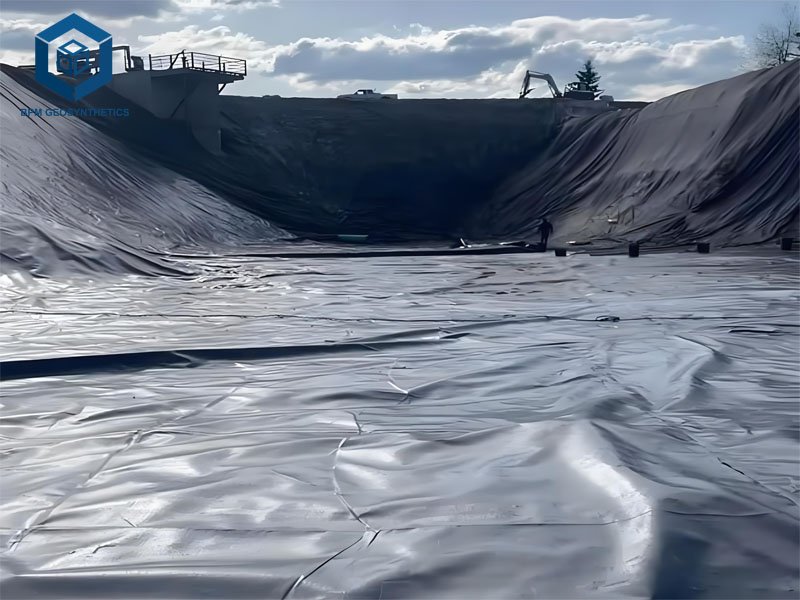
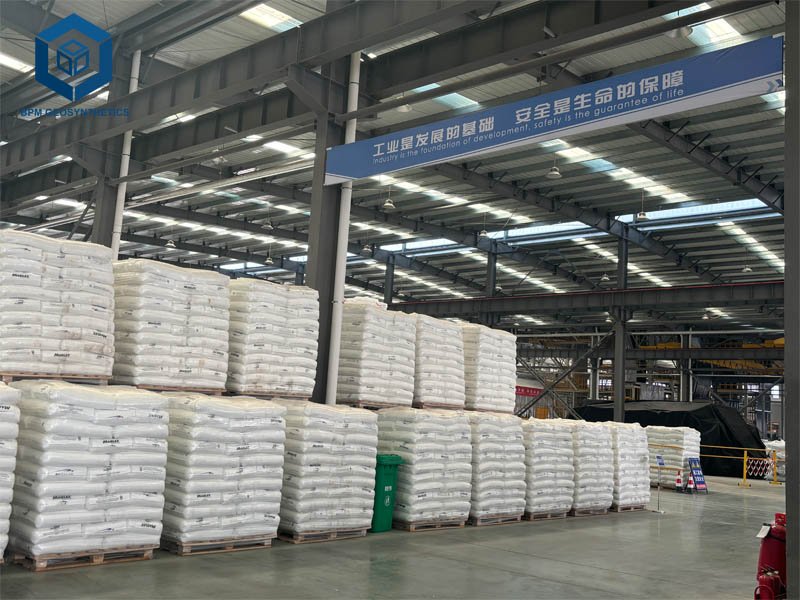
3. HDPE Pool Liner Applications
The BPM HDPE Pool Liner is a versatile solution widely used across multiple industries for effective containment and waterproofing. Its superior impermeability makes it ideal for water conservation projects, where it prevents seepage in reservoirs, canals, and decorative lakes.
3.1 HDPE Pool Liner – Aquaculture Waterproofing
In aquaculture, our geomembrane serves as a durable lining for fish ponds and shrimp farms, ensuring optimal water retention and a controlled environment for aquatic life. The liner also enhances irrigation efficiency by minimizing water loss in agricultural ponds and storage systems.
3.2 HDPE Pool Liner – Environmental Protection and Industrial Containment
BPM’s HDPE Pool Liners play a critical role in environmental remediation and waste management. They are extensively used in landfill lining systems to prevent leachate contamination of groundwater, as well as in wastewater treatment lagoons to securely contain treated effluent. The oil and gas industry relies on our liners for secondary containment of hazardous liquids, reducing the risk of spills and environmental damage. Additionally, power plants utilize these geomembranes to line coal ash ponds and storage areas, ensuring compliance with environmental regulations.
3.3 HDPE Pool Liner – Durability for Demanding Conditions
Engineered to withstand harsh environments, BPM’s HDPE Pool Liners offer exceptional chemical resistance, UV stability, and long-term durability, making them suitable for extreme industrial applications. Whether for pollutant containment, seepage prevention, or operational safety, our liners provide reliable performance across diverse settings. With proven adaptability and cost-efficiency, BPM Geosynthetics continues to deliver high-quality HDPE geomembrane solutions that meet the evolving needs of water management, industrial containment, and environmental protection projects worldwide.
4. Does HDPE Pool Liner Really Work?
The effectiveness of an HDPE Pool Liner depends heavily on proper installation, particularly the welding process. When correctly installed following industry standards, BPM’s HDPE geomembranes provide an impermeable, long-lasting barrier for water containment, environmental protection, and industrial applications. Below are the critical steps and precautions for ensuring a successful welding process.
4.1 Welding Machine Setup & Initial Preparation
The welding process begins with precise adjustments:
- Pressure, temperature, and speed must be set according to the liner thickness and environmental conditions.
- The overlap of the weld seam (minimum 10 cm for 20 mil HDPE liners) must be checked before welding.
- The film must be free of oil, dust, mud, or debris at the joints—any contamination must be cleaned before proceeding.
- A test specimen (0.9mm x 0.3mm) must be welded and subjected to peeling and shear tests to confirm weld strength before full-scale welding begins.
4.2 Welding Execution & Quality Control
During welding, operators must:
- Monitor the welding machine continuously, adjusting speed and temperature as needed.
- Ensure the weld seam is straight, smooth, and free from slipping or jumping.
- Avoid dead folds (permanent creases) when laying the liner, allowing for thermal expansion/contraction.
- If splicing is required, longitudinal seams should follow transverse seams, maintaining a T-joint with >50 cm spacing to prevent weak points.
4.3 Joint & Seam Reinforcement Techniques
To maximize durability:
- Adjacent welds should be staggered to distribute stress.
- T-joints are preferred over cross-shaped joints.
- Extrusion welding should reinforce intersections where seams meet.
- If condensation, moisture, or dirt is present, welding should only proceed after proper cleaning and drying.
4.4 Environmental & Operational Limitations
Welding should not be performed under these conditions unless protective measures are taken:
- Rain, high humidity, or dew on the liner surface.
- Temperatures below 5°C (unless preheating the welding machine).
- Unstable power supply—always use a voltage-stabilized generator or regulator to prevent welding defects.
4.5 Maintenance & Final Checks
To ensure long-term performance:
- Regularly inspect the welding gun’s slider—replace if worn to avoid damaging the liner.
- Clean the welding tip with a cloth (not hands) if temperatures drop below 200°C.
- Allow for thermal expansion gaps during installation to prevent stress damage.
When these guidelines are followed, BPM’s HDPE pool liners deliver reliable, leak-proof containment for decades, making them a proven solution for water storage, aquaculture, landfills, and industrial applications. Proper installation is key—trusting experienced installers ensures optimal performance.


Summary
As the largest Pool liner companies in China, BPM has more than 160 professional staff and 36,000 square meters Pool liner manufacturing factory equipped with state of the art geomembrane production lines. BPM geomembrane factory is certificated by ISO9001, ISO14001, and OHSAS18001. All BPM geomembranes have passed the certificates of the TUV, Soncap, SASO, BV and the test of SGS and Intertek etc. Product innovation, quality assurance and customer satisfaction are our long term commitment to our worldwide customers. Hope to be your partner.

